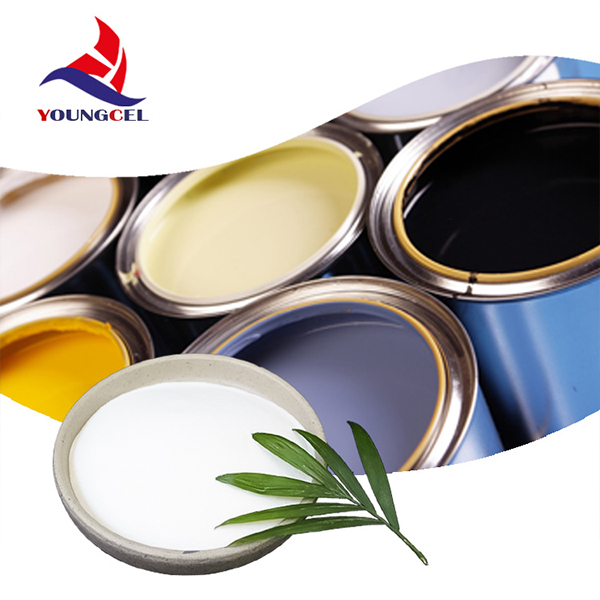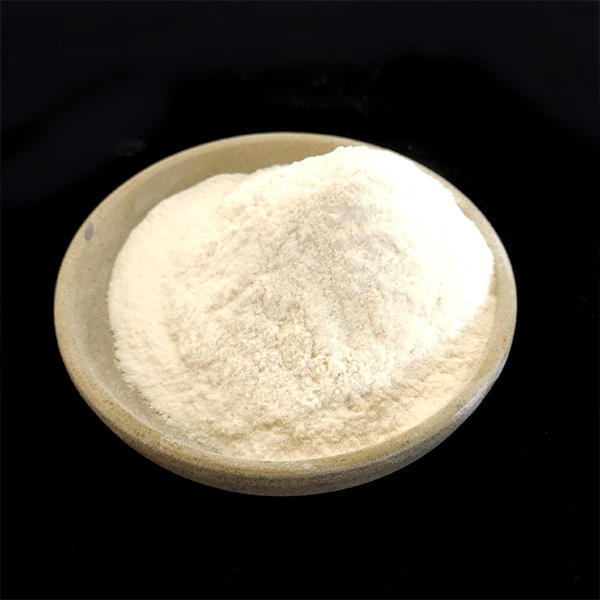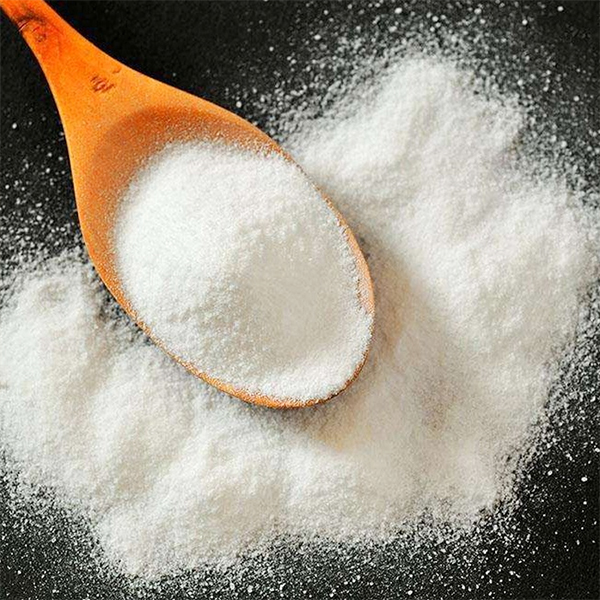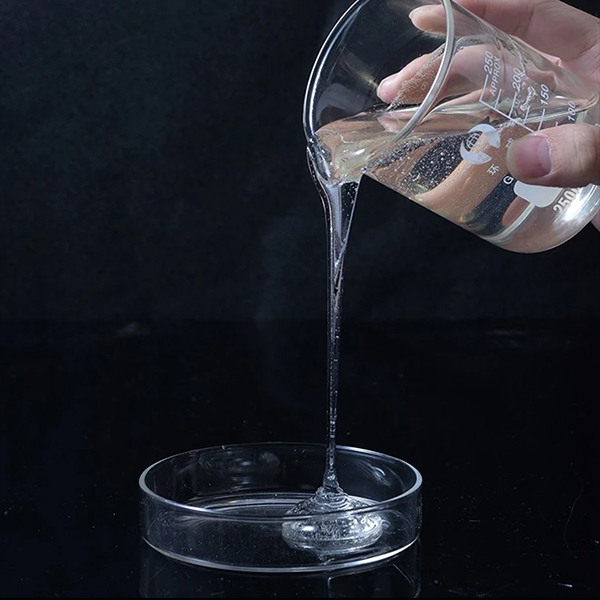Introduction to MHEC in Construction and Paint
In the dynamic landscape of modern construction and advanced coatings, the performance of auxiliary materials is paramount. We introduce the high-performance Factory Sale Construction Grade MHEC Technical Grade for Paint Cellulose Ether MHEC, a crucial additive revolutionizing the properties of building materials and paint formulations. Methyl Hydroxyethyl Cellulose (MHEC) is a non-ionic cellulose ether derived from natural cellulose, known for its exceptional thickening, water retention, film-forming, and protective colloid properties. Specifically engineered for demanding construction applications and high-quality paint systems, this technical grade MHEC enhances workability, adhesion, open time, and overall durability of various products, ensuring superior performance and reliability on every project.
The unique molecular structure of MHEC allows it to disperse efficiently in water, forming a clear, viscous solution that significantly improves the rheological characteristics of cement-based mortars, gypsum products, and water-based paints. Its versatility makes it indispensable for formulators aiming to achieve precise control over consistency, flow, and setting properties. As urbanization accelerates and environmental regulations tighten, the demand for high-performance, eco-friendly construction chemicals and paint additives like MHEC continues to grow, driving innovation in material science.
Industry Trends and Market Dynamics for Cellulose Ethers
The global market for cellulose ethers, particularly MHEC, is experiencing robust growth, driven by several key industry trends. A primary driver is the increasing focus on sustainable and green building practices. MHEC, being derived from renewable resources, aligns perfectly with these initiatives by improving the efficiency and durability of construction materials, thereby extending their service life and reducing waste. Furthermore, the rapid expansion of the construction sector in emerging economies, coupled with significant infrastructure development projects worldwide, fuels the demand for high-quality additives.
Another significant trend is the continuous innovation in dry-mix mortar formulations. Manufacturers are increasingly seeking additives that offer superior performance in terms of sag resistance, enhanced adhesion to various substrates, and extended open time, especially for large-format tiles and complex architectural designs. The move towards prefabricated construction methods also necessitates materials with precise rheological control and rapid setting properties, areas where advanced MHEC grades excel. In the paint and coatings industry, there's a growing preference for water-based formulations due to stringent VOC (Volatile Organic Compound) regulations, making MHEC an essential component for achieving desired viscosity, stability, and film formation without relying on solvent-based thickeners.
Technological advancements in manufacturing processes are also leading to the development of specialized MHEC grades with tailor-made properties for specific applications, such as high-temperature stability or improved compatibility with other chemical admixtures. This specialization allows for greater flexibility and performance optimization, enabling formulators to meet increasingly strict performance requirements. The emphasis on high-quality, long-lasting finishes in both residential and commercial projects further solidifies the market position of premium cellulose ethers like MHEC.

Detailed Manufacturing Process Flow of MHEC
The production of high-quality Factory Sale Construction Grade MHEC Technical Grade for Paint Cellulose Ether MHEC involves a sophisticated chemical synthesis process, starting from carefully selected raw materials. This meticulous process ensures the consistent purity, molecular weight distribution, and substitution patterns necessary for superior performance in demanding applications. The primary raw material is purified cellulose, typically derived from wood pulp or cotton linters, which undergoes a series of chemical modifications.
- Alkalization: Purified cellulose is first treated with a concentrated alkali solution, typically sodium hydroxide (NaOH), to produce alkali cellulose. This step activates the cellulose by swelling its fibrous structure, making the hydroxyl groups more accessible for subsequent etherification reactions.
- Etherification (Methylation and Hydroxyethylation): The alkali cellulose is then reacted with methyl chloride (CH₃Cl) and ethylene oxide (C₂H₄O) in a precisely controlled, pressurized reactor. The methyl chloride introduces methyl groups (-CH₃) onto the cellulose backbone, while ethylene oxide introduces hydroxyethyl groups (-CH₂CH₂OH). The ratio and sequence of these reactants determine the degree of substitution and the final properties of the MHEC, such as its hydration rate, solution viscosity, and thermal gelation temperature. This stage is critical for achieving the specific technical grade required for construction and paint applications.
- Neutralization and Washing: After the etherification is complete, the reaction mixture is neutralized to remove excess alkali and by-products. The crude MHEC is then thoroughly washed with hot water to remove impurities like sodium chloride and unreacted reagents, ensuring a high purity product. Efficient washing is vital for minimizing salt content and optimizing the performance characteristics.
- Drying and Grinding: The purified MHEC slurry is then dewatered and dried using specialized equipment, such as flash dryers or fluidized bed dryers, to reduce its moisture content to desired levels. The dried product is subsequently ground into a fine powder, and then sieved to achieve specific particle size distributions. This precise particle sizing is crucial for optimal dissolution rate and dispersion in dry-mix formulations and paints.
- Quality Control and Packaging: Throughout the entire process, rigorous quality control measures are implemented. Samples are taken at various stages for testing parameters such as viscosity, moisture content, pH, ash content, and specific rheological properties relevant to end-use applications. Products are certified against international standards such as ISO 9001 for quality management. The final product is packaged in multi-ply paper bags with an inner polyethylene liner to protect against moisture and ensure a long service life.
This detailed manufacturing process ensures that our Factory Sale Construction Grade MHEC Technical Grade for Paint Cellulose Ether MHEC meets stringent technical specifications, offering consistent quality and predictable performance for critical industrial applications. Our MHEC is specifically designed to enhance properties like water retention, open time, sag resistance, and adhesion in cement-based and gypsum-based dry-mix mortars, as well as providing excellent thickening and stabilizing capabilities in water-borne paints and coatings. Our commitment to quality extends to ensuring the material's compatibility and long-term stability within complex formulations, contributing to energy efficiency in construction by improving material performance and reducing rework.
Technical Specifications and Parameters
Understanding the precise technical specifications of MHEC is critical for formulators to select the optimal grade for their specific applications. Our Factory Sale Construction Grade MHEC Technical Grade for Paint Cellulose Ether MHEC is characterized by a range of parameters that directly influence its performance in construction materials and paints. These include viscosity, degree of substitution, pH, moisture content, and particle size distribution. The table below provides typical specifications for our high-quality MHEC product line.
| Parameter | Unit | Typical Value / Range | Test Method / Standard |
|---|---|---|---|
| Viscosity (2% Solution @ 20°C) | mPa·s | 10,000 - 100,000 (Customizable) | Brookfield RVT, Spindle No. 6, 20 rpm |
| Methoxyl Content (DS) | % | 20.0 - 24.0 | ASTM D1347 |
| Hydroxyethoxyl Content (MS) | % | 4.0 - 8.0 | ASTM D1347 |
| Moisture Content | % | ≤ 5.0 | ISO 7780 |
| pH (1% Solution) | - | 6.0 - 8.0 | Potentiometric method |
| Ash Content (Sulphated) | % | ≤ 3.0 | ASTM D1347 |
| Particle Size (through 80 mesh) | % | ≥ 98.0 | ASTM D1347 / ISO 787 |
| Bulk Density | g/L | 250 - 450 | ISO 60 |
These parameters are meticulously controlled to ensure that each batch of MHEC delivers consistent performance. For instance, the viscosity range indicates the product's thickening power, crucial for controlling slump in mortars and flow in paints. The methoxyl and hydroxyethoxyl content directly influence the MHEC's solubility, gelation temperature, and enzymatic resistance, which are vital for long-term stability in various environmental conditions. Our commitment to strict adherence to these technical specifications ensures that our customers receive a reliable and high-performing product every time.

Versatile Application Scenarios
The versatility of Factory Sale Construction Grade MHEC Technical Grade for Paint Cellulose Ether MHEC makes it an indispensable additive across a wide array of construction and paint applications. Its unique properties significantly enhance the performance and durability of end products, addressing common challenges faced by professionals in these industries.
In Construction Materials:
- Tile Adhesives (Tile Grouts & Mortars): MHEC provides excellent water retention, extending the open time and adjustability of tile adhesives, especially in hot and dry climates. It significantly improves adhesion strength to various substrates and enhances the anti-slip properties, crucial for large format tiles and vertical applications. Customers consistently report improved workability and reduced material waste.
- Renders and Plasters: In cement-lime renders and gypsum plasters, MHEC acts as a thickening agent, improving consistency and preventing sagging on vertical surfaces. Its water retention capabilities ensure proper hydration of the binder, leading to stronger, crack-free finishes. It also imparts better pumpability and sprayability for machine-applied renders.
- Self-Leveling Compounds (SLCs): MHEC helps control the rheology of SLCs, facilitating smooth flow and excellent leveling while preventing segregation and bleeding. Its rapid viscosity development contributes to quick setting and minimizes surface defects, ensuring a perfect substrate for subsequent floor coverings.
- Skim Coats and Wall Putty: For thin-layer applications, MHEC improves spreadability, adhesion, and film formation. It minimizes cracking and provides a smooth, uniform surface ready for painting or wallpapering. Feedback from applicators highlights the ease of application and superior finish achieved.
- External Thermal Insulation Composite Systems (ETICS): MHEC is vital in ETICS mortars, enhancing adhesion to insulation boards and base coats. It improves flexibility, reduces shrinkage, and contributes to the overall durability and weather resistance of the system, crucial for long-term energy efficiency.
In Paints and Coatings:
- Water-Based Emulsion Paints: MHEC serves as an efficient thickener and rheology modifier, controlling viscosity, improving brushability and rollability, and preventing sagging. It enhances color stability and pigment suspension, leading to a uniform, high-quality finish. Its pseudo-plastic behavior is ideal for modern paint formulations.
- Latex Coatings: In latex-based systems, MHEC provides excellent protective colloid action, stabilizing the latex emulsion and preventing coagulation. It also improves film formation properties, ensuring a smooth, durable coating.
- Texture Paints: For achieving specific textures, MHEC's thickening and water retention properties are invaluable. It allows for controlled application and maintains the desired texture during drying, contributing to unique aesthetic finishes.

Key Technical Advantages of Our MHEC
The superior performance of our Factory Sale Construction Grade MHEC Technical Grade for Paint Cellulose Ether MHEC stems from its optimized molecular structure and manufacturing precision, offering distinct advantages that translate into tangible benefits for our clients:
- Excellent Water Retention: A hallmark of high-quality MHEC, our product ensures extended open time for mortars and renders, allowing for better workability and proper hydration of cementitious binders. This minimizes premature drying and reduces the risk of cracks, leading to stronger, more durable materials.
- Superior Thickening Efficiency: With a broad range of viscosity grades, our MHEC provides precise rheological control. This allows formulators to achieve desired consistency, anti-sag properties, and improved stability in various formulations, optimizing application characteristics such as brushability and sprayability.
- Enhanced Adhesion and Cohesion: MHEC improves the bond strength between materials and substrates by creating a uniform film and promoting better wetting. This is crucial for tile adhesives, base coats, and skim coats, ensuring long-lasting and reliable connections.
- Optimized Open Time and Adjustability: Especially important for large-format tile installation, our MHEC extends the working time of mortars, giving installers flexibility and reducing the need for rapid application, which in turn minimizes errors and waste.
- Anti-Sagging and Anti-Slump Properties: In vertical applications like renders, plasters, and heavy-bodied paints, MHEC effectively prevents material sag, ensuring uniform thickness and a professional finish. This directly reduces material consumption and labor costs.
- Excellent Film Formation and Protective Colloid Action: In paints and coatings, MHEC contributes to uniform film formation, enhancing the aesthetic appearance and durability of the dried film. It also stabilizes pigment dispersions and latex emulsions, preventing settling and improving shelf life.
- Improved Workability and Spreadability: Mortars and paints modified with our MHEC exhibit smoother consistency, making them easier to mix, pump, trowel, brush, or spray. This translates into increased productivity on the job site and reduced physical effort for applicators.
These technical advantages are not merely theoretical; they are consistently demonstrated in real-world applications, leading to higher quality finished products, reduced material consumption, and improved efficiency for our clients. Our dedicated R&D team continuously works to refine these properties, ensuring our MHEC remains at the forefront of additive technology.
Vendor Comparison: Why Choose Youngcel MHEC
In a competitive market, selecting the right supplier for critical raw materials like MHEC is paramount. While many vendors offer cellulose ethers, Youngcel distinguishes itself through a steadfast commitment to quality, technical expertise, and customer-centric solutions. Our Factory Sale Construction Grade MHEC Technical Grade for Paint Cellulose Ether MHEC is not just a product; it's a promise of consistent performance and reliability. Below is a comparative overview highlighting key differentiators:
| Feature/Metric | Youngcel MHEC | Generic MHEC (Typical) |
|---|---|---|
| Water Retention Efficiency | Excellent (≥90% in 30min mortar test) | Good to Moderate (70-85% in 30min mortar test) |
| Thickening Power (Viscosity Stability) | High & Stable (Consistent rheology across batches) | Variable (Batch-to-batch inconsistency common) |
| Open Time Extension | Significantly Extended (e.g., 30-60 min for tile adhesive) | Limited (e.g., 15-25 min for tile adhesive) |
| Anti-Sagging/Slump Resistance | Excellent (Minimal sag even at higher dosages) | Moderate (Risk of sag in thicker layers) |
| Dispersion & Dissolution | Rapid & Lump-free (Special surface treatment) | Slower, potential for lumps |
| Purity & Consistency | High Purity (<3% ash content, ISO 9001 certified) | Variable (Higher ash/impurity levels possible) |
| Technical Support & Customization | Dedicated R&D, application engineers, tailored solutions | Limited standard product offerings, minimal support |
Youngcel's long-standing presence in the cellulose ether market underscores our deep expertise and commitment to product excellence. We rigorously adhere to international quality management systems, including ISO 9001, ensuring that every batch of MHEC meets the highest standards. Our advanced production facilities employ state-of-the-art technology to control every aspect of the manufacturing process, from raw material selection to final packaging. This unwavering focus on quality assurance, coupled with a robust global supply chain, provides our partners with a competitive edge and peace of mind.

Customized Solutions and Technical Support
Recognizing that every application has unique requirements, Youngcel offers extensive customized solutions for our Factory Sale Construction Grade MHEC Technical Grade for Paint Cellulose Ether MHEC. Our technical experts work closely with clients to understand their specific formulation challenges, environmental conditions, and performance targets. This collaborative approach allows us to fine-tune MHEC parameters, such as viscosity, particle size, and substitution levels, to deliver a product precisely tailored to their needs.
- Tailored Viscosity Grades: We can produce MHEC with specific viscosity profiles to match desired workability, sag resistance, and open time requirements for diverse mortar and paint systems.
- Optimized Particle Size Distribution: Depending on the dissolution rate and dispersion characteristics needed (e.g., for quick-dissolving paints or slow-releasing dry-mix mortars), we can adjust the grinding and sieving processes.
- Surface Treatment Options: To enhance cold-water solubility or dispersion delay, specialized surface treatments can be applied, preventing lump formation and ensuring smooth integration into complex formulations.
- Application-Specific Testing: Our state-of-the-art laboratory is equipped to conduct application-specific tests, such as open time, water retention, adhesion strength, and rheological studies, to validate customized MHEC performance in actual customer formulations.
Beyond product customization, Youngcel provides comprehensive technical support, including formulation advice, troubleshooting assistance, and on-site consultations. Our team of experienced chemical engineers and application specialists are dedicated to helping clients optimize their processes and achieve superior product performance. This commitment to partnership ensures that our clients not only receive a premium product but also the expertise to maximize its value.
Application Case Studies
Real-world application demonstrates the tangible benefits of using Youngcel's high-quality MHEC. Here are a few examples showcasing its impact:
Case Study 1: High-Performance Tile Adhesive for a Commercial Project
A leading construction firm in Southeast Asia was developing a premium tile adhesive for a large commercial shopping mall project. The requirements included extended open time, superior anti-slip properties for large format porcelain tiles (60x120 cm), and high bond strength under varying humidity. Traditional HPMC grades provided insufficient open time and adjustability, leading to application challenges. Youngcel collaborated with the firm, recommending a specialized high-viscosity Factory Sale Construction Grade MHEC Technical Grade for Paint Cellulose Ether MHEC. After implementation, the client reported a 40% increase in open time and significantly improved anti-slip performance, reducing material waste by 15% and increasing installation efficiency by 20%. The project was completed ahead of schedule with exemplary tile adhesion and finish quality.
Case Study 2: Eco-Friendly Water-Based Paint for Residential Developments
A European paint manufacturer sought to improve the rheology and stability of their new low-VOC water-based interior paint line. Challenges included poor brush drag, inconsistent film build, and pigment settling during storage. After trials with various thickeners, Youngcel's mid-viscosity MHEC was integrated into their formulation. The MHEC provided excellent pseudoplasticity, resulting in smooth application with minimal spatter and excellent flow-leveling. It also effectively stabilized the pigment dispersion, eliminating settling issues. The paint's shelf life was extended, and customer feedback praised the improved workability and superior, uniform finish, leading to a 25% increase in market adoption for the new paint line within the first year.
Case Study 3: Advanced Skim Coat for High-Rise Building Exteriors
An engineering company in the Middle East required a highly robust skim coat for the exterior of a high-rise building, demanding exceptional adhesion, crack resistance, and workability under high temperatures. The existing skim coat formulations were difficult to apply uniformly and exhibited premature drying. Youngcel provided a modified MHEC grade, specifically engineered for high-temperature water retention and sag resistance. This MHEC enabled the development of a skim coat that was easy to trowel, maintained an extended open time even in arid conditions, and significantly reduced micro-cracking during curing. The enhanced workability led to a 30% reduction in application time and a superior, defect-free surface, contributing to the building's aesthetic longevity and structural integrity.

Trust and Reliability: FAQ, Lead Time, Warranty, and Support
Frequently Asked Questions (FAQ)
-
Q: What is the primary difference between MHEC and HPMC?
A: While both are cellulose ethers, MHEC (Methyl Hydroxyethyl Cellulose) generally offers better enzymatic resistance, enhanced stability at higher temperatures, and a higher thermal gelation point compared to HPMC (Hydroxypropyl Methyl Cellulose). This makes Factory Sale Construction Grade MHEC Technical Grade for Paint Cellulose Ether MHEC particularly advantageous for demanding construction applications and formulations requiring superior temperature stability.
-
Q: How does Youngcel ensure the quality of its MHEC?
A: Youngcel adheres to stringent ISO 9001 certified quality management systems. We conduct comprehensive in-process and final product testing for parameters such as viscosity, moisture content, pH, and particle size distribution. Each batch undergoes rigorous analysis to ensure it meets our published specifications and client requirements.
-
Q: Can MHEC be used in outdoor applications?
A: Yes, the inherent properties of MHEC, including its improved resistance to enzymatic degradation and superior water retention, make it highly suitable for outdoor construction applications like external renders, tile adhesives, and ETICS where exposure to varying weather conditions is common.
-
Q: What is the typical shelf life of Youngcel MHEC?
A: When stored in original, unopened packaging in a cool, dry place away from direct sunlight and moisture, our MHEC typically has a shelf life of 24 months from the date of manufacture. Proper storage is crucial to maintain its optimal performance characteristics.
Lead Time and Fulfillment
Youngcel maintains efficient production cycles and a robust supply chain network to ensure timely delivery. Standard lead times for our MHEC are typically 7-14 business days for standard grades, depending on order volume and destination. For customized grades, lead times will be confirmed upon finalization of specifications and batch requirements. We work diligently to fulfill orders promptly and provide transparent communication regarding shipping schedules.
Warranty and Quality Commitment
Youngcel stands behind the quality of its products. Our MHEC is warranted to meet the published technical specifications and agreed-upon customized parameters at the time of delivery. Should any product fail to meet these specifications, Youngcel commits to a thorough investigation, offering replacement or credit as per our terms and conditions. Our dedication to quality is a cornerstone of our business, ensuring our partners receive only the best.
Comprehensive Customer Support
Our commitment to our clients extends beyond product delivery. Youngcel offers comprehensive after-sales support, including:
- Dedicated technical service team for formulation advice and troubleshooting.
- Access to detailed product documentation, safety data sheets (SDS), and certificates of analysis (CoA).
- Application laboratories for testing and optimizing client formulations with our MHEC.
- Responsive customer service for order tracking, logistics, and general inquiries.
We believe in building long-term partnerships through unparalleled product quality and support.

Conclusion
The choice of high-performance additives like MHEC is pivotal for achieving superior results in modern construction and advanced paint applications. Youngcel's Factory Sale Construction Grade MHEC Technical Grade for Paint Cellulose Ether MHEC stands as a testament to unparalleled quality, technical innovation, and unwavering reliability. By offering exceptional water retention, precise rheological control, enhanced adhesion, and consistent performance across a multitude of challenging scenarios, our MHEC empowers formulators and manufacturers to create products that exceed industry standards.
Our dedication to stringent quality control, customized solutions, and robust technical support ensures that clients not only receive a world-class product but also a strategic partner committed to their success. Invest in Youngcel MHEC to elevate your formulations, optimize your processes, and deliver outstanding results in an increasingly demanding market.
References
- Burdock, G. A. (2007). Fenaroli's Handbook of Flavor Ingredients. CRC Press.
- Kroschwitz, J. I. (2004). Kirk-Othmer Encyclopedia of Chemical Technology. John Wiley & Sons.
- Schlösser, F. (2006). Construction Chemicals: A Handbook. CRC Press.
- Ullmann's Encyclopedia of Industrial Chemistry. (2012). Wiley-VCH.
- ASTM International Standards, particularly those related to cellulose derivatives and construction materials (e.g., D1347 for Methylcellulose).
-
Rdp that The Revolutionary Polymer Powder Transforming Modern Construction MaterialsNewsAug.11,2025
-
Hpmc Powder that Versatile Additive for Detergents and Personal CareNewsAug.11,2025
-
Hpmc Hydroxypropyl Methylcellulose that Essential Building Material Additive from Shijiazhuang Gaocheng YongfengNewsAug.11,2025
-
Hydroxypropyl Methyl Cellulos Hpmc that Essential for Construction ApplicationsNewsAug.11,2025
-
Mhec Powder that Revolutionizing Construction Chemistry with Cellulose Ether SolutionsNewsAug.11,2025
-
Industri Hpmc that The Global Backbone of Advanced ConstructionNewsAug.11,2025




